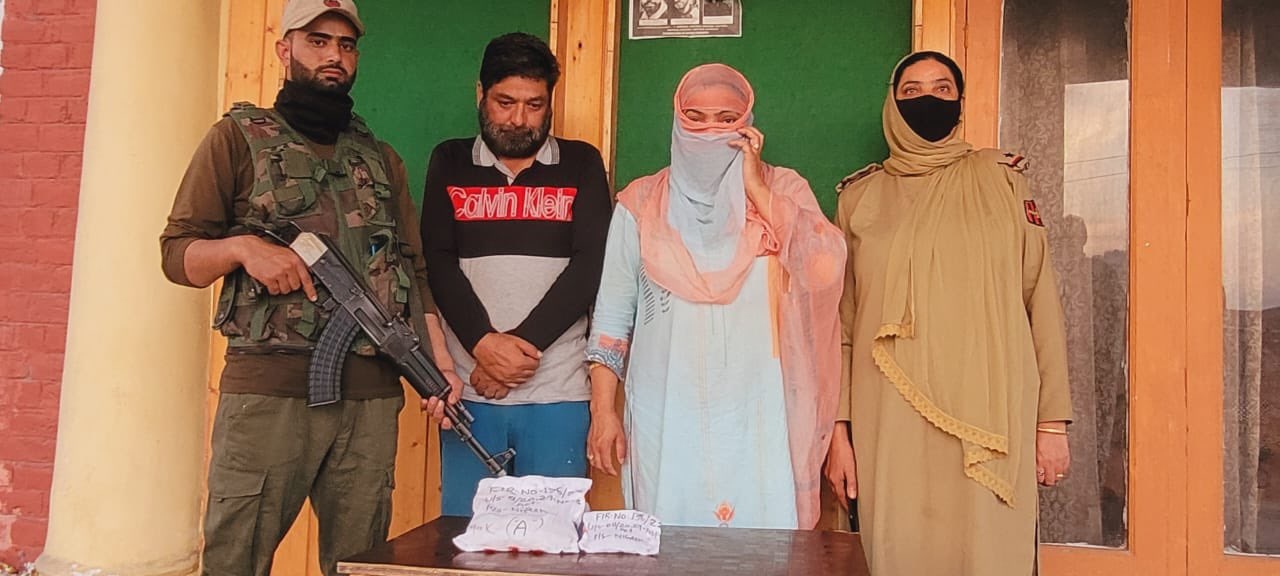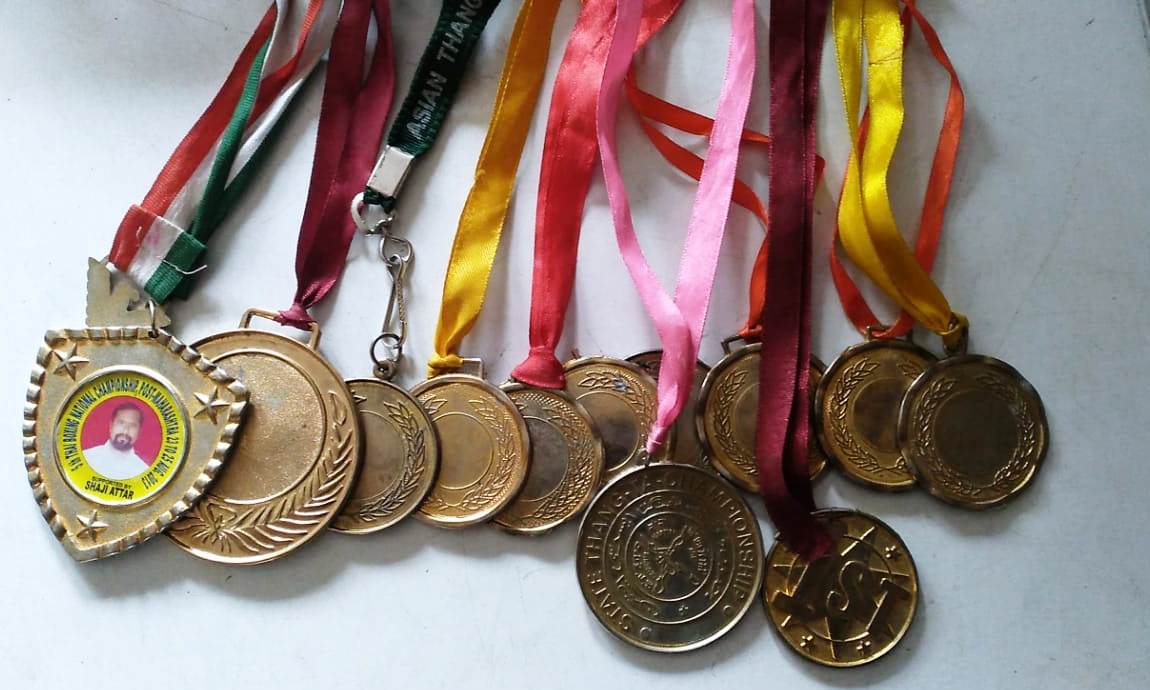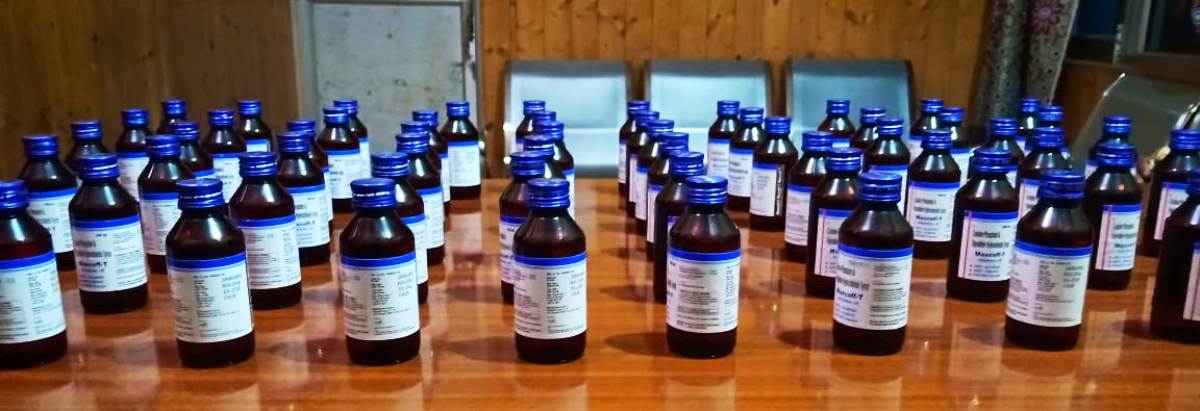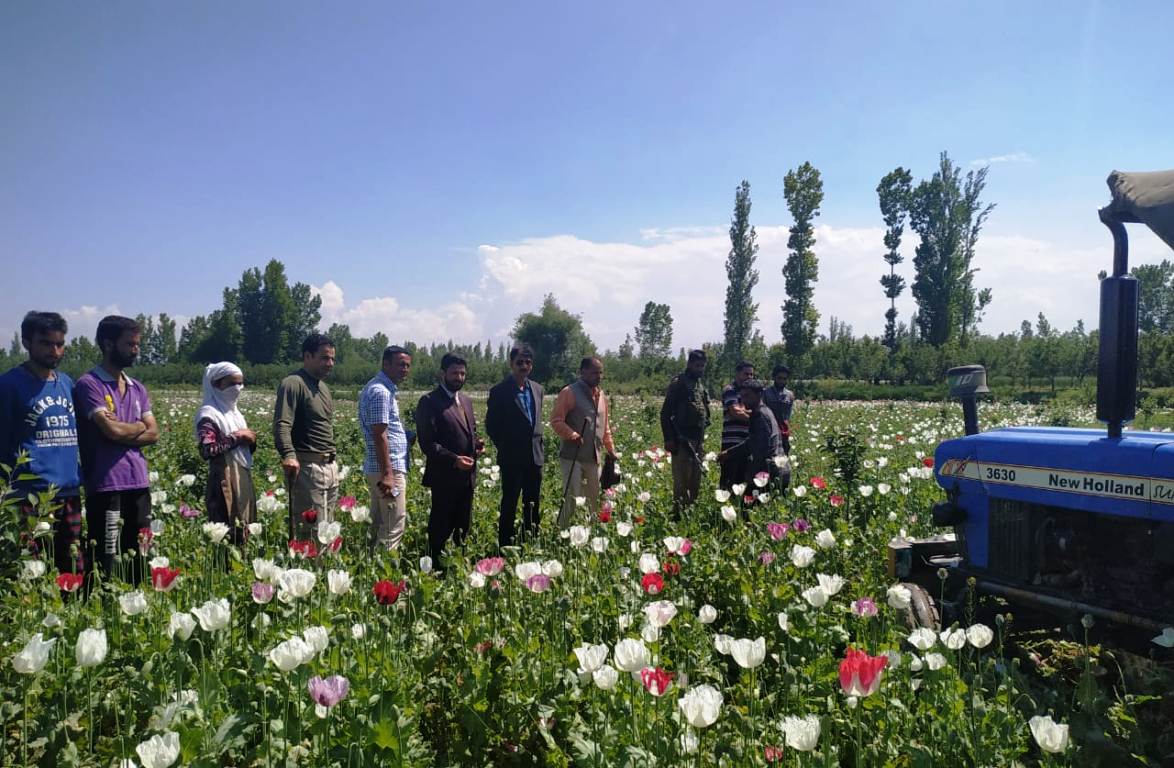A kick to look for the thrill, feel good and forget troubles, a disproportionate number of youth are in substance abuse. Often started in seclusion, it has its social setting. With cases of suicide, homicide, accident and illness increasing at an alarming rate, the crisis and the consequences have spilt over to the family, the community and the entire society writes Tasavur Mushtaq
Abdul would have been 19 years old in March 2023, if he had survived a fatal road accident in 2021. Now he lay buried for the past 16 months. The only son of his parents, he left behind three sisters and shattered parents.
A teenager, affable and agile, his home had modest means for sustenance. Amid the daily difficulties, his parents tried every time for his complete comfort – from education to entertainment, everything. The bike, which became the reason for his death at 17, was part of the “happiness tools” that his parents had managed for him. His joy was their comfort.
In August 2021, when the heat held its forte till late evening, one day he went to see his friends. Abdul, his family revealed, had a habit of spending the latter part of the day with his friends, almost always. His routine was to return late in the evening, at times going to bed without taking dinner. This was besides the education-related engagements.
On a fateful evening, habitually out with his friends, Abdul did not return on time. Instead, his father received a call from some unknown number. The caller hurriedly informed, “your son has met with an accident and has been shifted to the hospital in critical condition.”
Stuck and shocked, hoping to have some miracle, the grieving family along with a few nearby relatives rushed to the hospital. They found him alive but critical. As days passed in prayers and prescriptions, he did not show any signs of improvement. Struggling, he was silently losing the battle. Finally, his treatment doctors declared him dead. The only detail divulged of the disaster was that his bike skidded off the road as he tried to save a collision.

Face to face with the tragedy of losing the lone son, his family was remorseful for having gifted him a bike. However, their belief was belied by reality. The story was not that simple. What later came to the fore was a more frightening picture of the tragedy. Abdul’s death was not just a road accident, his few friends revealed the reality later.
Abdul was a drug addict and a substance abuser for years. His death was a case of drugged driving. He had lost consciousness due to the intoxicating effects of the recent drug dose.
Abdul is not alone. It is a generation in mess. Professionals treating addicts suggest deaths have started taking place directly due to over dosages, convulsions, and cardiac arrests and indirectly due to road traffic accidents. Most of the time, these deaths are being reported as “natural”, leaving little to understand about the underlying conditions of drug abuse. Thus, the apparent reason may be different, but the cause is consistently the same.
Deadly Deals
Known notoriously for narcotics addiction, Punjab blames Kashmir for being a “source”, partly. When Captain Amrinder Singh, former Punjab Chief Minister spoke about the drug menace in 2018, he told Hindustan Times that “one new source of drugs is Kashmir despite so much security.” A scary statement, if Kashmir is the “source” of Punjab, what would be the actual crisis in the erstwhile state?
Recently, a study carried out by GMC Srinagar’s Department of Mental Health found that Kashmir has surpassed Punjab in drug abuse and ranks second in the all-India list of states with rampant drug abuse. Punjab has 1.2 per cent population using drugs and Kashmir has 2.5 per cent.

Earlier, a survey carried out by the National Drug Dependence Treatment Centre of AIIMS on the magnitude of substance use in India placed Jammu and Kashmir at the 5th rank and claimed that over 6 lakh people in the erstwhile state were affected by drug abuse.
Jammu and Kashmir Police (JKP)’s claim is constant that the “war against drugs is going on”. Top sleuths acknowledge that “there is a racket that gets these drugs into the Valley from Pakistan, and it’s either sold in J&K or dispatched to other states.”
On December 22, 2022, the Jammu and Kashmir Police in Kupwara said they cracked a drug trafficking module that was sourcing drugs from across the Line of Control. So far, 17 people have been arrested and it including five cops.
Yougal Kumar Manhas, SSP, Kupwara said Shakir Ali Khan, a resident of Keran who now lives on the other side of the LoC, has been supplying drugs to his son Tamheed Ahmad. Of the five kgs they had recently received from across, two kgs have been recovered. The district witnessed 85 drug-related cases being registered against 161 people.
Anti-Narcotics Task Force (ANTF), a special wing of JKP, has launched a crackdown in a coordinated manner to curb narcotics smuggling with the arrest of over 1232 drug peddlers and lodging of 867 FIRs in the first quarter of 2021-2022, police sources said, adding the drive against drug peddling foiled many attempts of the inter-state drug peddlers with timely inputs provided by the intelligence agencies.
By September 2022, National Crime Records Bureau (NCRB) has recorded that 1681 cases have been registered under Narcotic Drugs and Psychotropic Substances (NDPS) Act in 2021. Around 357 cases were registered for possessing drugs for personal use. Around 1324 cases were registered for possession for trafficking.
Pertinently, the maiden meeting of the State Level Committee of the Narco Coordination Centre was chaired by Chief Secretary Arun Kumar Mehta in November 2022, where it was told that as per a consumption survey there are at least six lakh residents affected by drug-related issues in the region. As the officials noted that the drug menace in terms of its usage and addiction has significantly gone up in Jammu and Kashmir during recent years, the meeting outlined broad project contours for tackling the menace.
Scary Statistics
Against the statistics in the public domain, the actual numbers are always high. Experts, who understand the crisis suggest that the “only percentage known is the one that is being reported, seeks medical care and that happens at an advanced stage.” Further, it is reported that the actual figures are never known, neither in life nor death because of the stigmas attached to the menace

However, the figures available help to give a rough sketch of the crisis. If data is deliberated upon, the situation is scarier in present times.
As per the 2018 Comprehensive National Survey on Extent and Pattern of Substance Use in India, there are more than 23 crore estimated users.
Figuratively, a few years ago, a study conducted by the Srinagar-based Institute of Mental Health and Neuroscience (IMHANS) found that over two-thirds of patients in the study had started substance abuse in the age group of 11-20 years. The most common substances of abuse identified included nicotine (94.4%), medicinal opioids (65.7%), cannabis (63.6%), benzodiazepines (45.5%), other prescription medications (43.4%), alcohol (32.5%), inhalants (11.1%), and cocaine (7.5%).
The study further exposed that poly-substance abuse was found in 91.9% of the studied patients. Inhalant use was seen predominantly among adolescents (54.5%) whereas nicotine (50.2%), cannabis (49.2%), alcohol (51.1%), opioids (58.4%), and benzodiazepines (53.48%) were more predominant in the age group of 21 to 30 years.
The other study conducted by a veteran psychiatrist, Dr Mushtaq Margoob, published in the Indian Journal of Psychiatry in 1993, reported that 9726 cases of substance-related disorders were reported to IMHANS in eight years starting January 1980. On the contrary, now the same institute sees more than 6000 patients with substance-related disorders per year since 2015.
Dr Margoob’s survey has also found that “more than two lakh people in Kashmir are into the consumption of illegal drugs.”
In its report, United Nations Drug Control Programme (UNDCP) reported that around 70000 people are drug addicts in Kashmir alone among which 4000 are females. The survey also revealed that 65 to 70% of students in Kashmir are drug addicts.
In 2018, the Jammu and Kashmir government in its draft drug de-addiction policy revealed that “drug addiction is widespread, fast-rising and is quickly taking the form of an epidemic in the erstwhile state.” Interestingly, Jammu and Kashmir is situated in close vicinity to the golden crescent, which produces 80 per cent of the world’s opium.
Huge Costs
Costs are known to all, both individuals and institutions. The Government of India under the Ministry of Social Justice and Empowerment has been implementing a scheme of National Action Plan for Drug Demand Reduction (NAPDDR) under which financial assistance is provided for preventive education and awareness generation, capacity building, skill development, vocational training and livelihood support of ex-drug addicts, besides other related initiatives to stop this epidemic crisis before it is too late.
The same ministry launched Nasha Mukt Bharat Abhiyaan (NMBA) in 272 most vulnerable districts in August 2020. In the last five years starting 2017-18, the beneficiaries of NAPDDR from Jammu and Kashmir during the last five years are 5967.
Turn and Types
Various studies conducted in recent years have shown an alarming shift in the pattern of substance abuse in terms of a rise in the number of female users and decreasing age at first use. The start age has fallen to as low as 09-10 years.
As statistics suggest, earlier the number of opium users was more than that of heroin users, but in the last few years, the trend has reversed. Heroin consumers went up manifolds, almost three times. If India as a whole is taken into consideration, opioid use in India is three times higher than the global average.
Last week, the Institute of Mental Health and Neuroscience (IMHANS) Kashmir released its study Prevalence and Pattern of Substance Use Disorders in 10 Kashmir districts, in which 1500 drug addicts were interviewed for understanding the issues. Almost 90 per cent of them were literate, nearly two-thirds were unmarried, and only one-fourth were unemployed. While more than 85 per cent were using opioids, only two per cent were drinking, 11 per cent were using cannabis and less than one per cent other substances including sedatives. Almost all districts exhibited almost a similar trend in substance abuse.

The study found heroin as the main substance abuse in most cases. While 29.3 per cent were found in heroin-chasing, 52.3 per cent were injecting it, 3.1 per cent were found using tramadol and tapentadol and 0.7 per cent were on buprenorphine. Almost half of them were taking the injection daily and more than seven per cent up to six times a week. Tragically, more than 53 per cent were sharing the middle and 65 per cent were re-using it. More than 13 per cent of substance abusers had to confront legal complications including landing in jail for the use or supply of drugs. Interestingly 88 of them managed to get some kind of drug while in jail.
The study suggests that Kashmir has around 67,000 drug addicts, out of which 85 per cent, which totals more than 56000 use heroin daily that too by injecting it into the body. The other way to use heroin is through the foil. Besides, the study revealed that most drug addicts are in the age group of 17-33 and are unemployed. Surprisingly, doctors say that every person who is addicted to heroin is spending Rs 88,000 every month for drugs.
Emphasizing that the scenario has changed, Dr Fazal Ul Rab, who led the study with Zoya Mir has said that “compared to five or ten patients a day in 2016, now 120-130 patients are coming daily.”
Being more prone to heroin, the study says that, “there are a lot of sudden deaths in Kashmir, especially of teenagers.”
Apart from a drastic increase in consumption, the study has located another shift. From traditional plant-based drugs like cannabis, cocaine, and heroin, to synthetic drugs such as tramadol, consumption of narcotic substances has increased manifold in recent years.
In terms of consumers, illicit drug markets are mostly dominated by cannabis and opioids. Pertinently, cannabis in the form of bhang is legal in India. Its other forms — ganja (marijuana) and charas (hashish) – are illegal. On the other side, opioids are sold as opium (doda, phukki or poppy husk), heroin (brown sugar, smack) and pharmaceutical opioids.
It has been witnessed that among children the inhalational route is more prevalent, compared to adults.

The Way Out
Mere talking about substance abuse cannot curb the menace. The need is to have concerted efforts, both at societal and systemic levels.
Addiction is a disease of the mind and affects the body badly. Not giving away the importance of treating it as any other disease, efforts should be to include centres for drug de-addiction with the main hospitals. Like other branches, this too should be part of a regular network where affected ones don’t see themselves as secluded or stigmatised.
If prevention is a priority, the biggest thing is supply. The health and hospital administrations should ensure that there is a regulated supply of medicines.
If good practices are followed, no prescription should be valid lifelong. If a doctor prescribes medicine for a week, it should not be valid for ages or even carrying a cover makes one eligible to have medicines, forever. In advanced countries, prescriptions are submitted at pharmacies and medicines are taken in the number only prescribed. It is not an unending process.
Awareness is also important. One of the studies done on the crisis revealed that above 90 per cent of the affected population doesn’t have any awareness regarding the drug de-addiction process, leaving little eight per cent aware of such initiatives.
On the other side, the strong arm of the government, the police have a crucial role to play. With men and machinery at their disposal and a vast network of human intelligence, the improved efforts would facilitate their already declared war against the menace.

However, no society can win a war against drugs until there is no cooperation and coordination among different stakeholders.
But society has a key role to play. Regret is no rescue. The disaster demands discipline, first at home and later outside. A parent should make an effort to be part of his child’s life. Not monetarily only, but mentally as well. Ensuring comfort should not be the only concern, the crisis requires care. Care of being conscious about the well-being of a child.
More importantly, the pulpits must prefer to talk about the menace, not only for condemnation but condoning the negatives of affected people to spread positivity in their lives. Masjids should emerge as centres for rehabilitation. The preachers in collaboration with experts should have sessions to talk about this crisis. Regular programmes should be held to discuss changes in children with parents. The first point of help should be identifiable. Local committees should have small centres to talk about the menace. Counsel youth in their area and be in touch with the experts. Waiting for government intervention only won’t help entirely. The colossal tragedy requires collective efforts.
Lastly, used as slang in yesteryears, Charsi, had visible smoke to be identified from a distance. The current crisis is deep down in our homes, invisibly intruding to shatter our future generations.
Though it is already late, anytime is a good time to respond responsibly.















